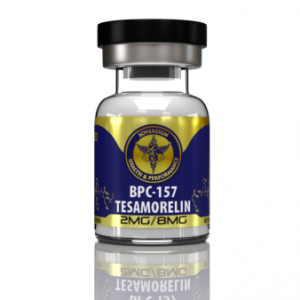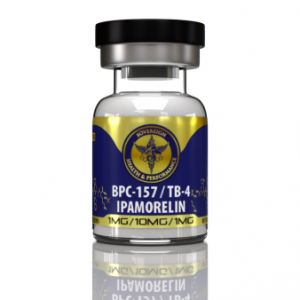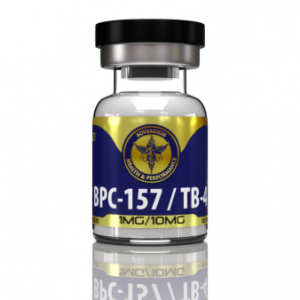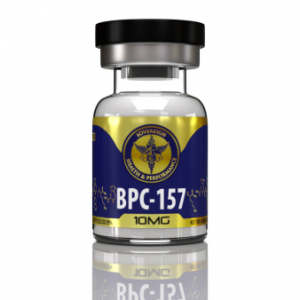BPC-157 Quantified
BPC-157, a synthetic peptide derived from a protein in the stomach, has been studied extensively for its potential benefits in promoting healing and recovery, particularly in wound healing, tissue repair, and inflammation reduction. While most research has been conducted in animal models, several studies provide quantifiable data that underscore BPC-157’s therapeutic effects:

1. Wound Healing
- Study: A study on rats with full-thickness skin wounds showed that BPC-157-treated wounds experienced a 75% reduction in wound area within 14 days, compared to a 47% reduction in the control group.
- Mechanism: BPC-157 promotes angiogenesis (formation of new blood vessels) and improves the organization of collagen fibers, which accelerates the healing process.
- Reference: Sikiric P, et al., “Gastric pentadecapeptide BPC 157 as an effective therapy for muscle crush injury in the rat,” Regulatory Peptides, 2012.
2. Tendon and Ligament Healing
- Study: Research on rats with Achilles tendon transections found that BPC-157 administration resulted in a 47% increase in tendon strength after 14 days compared to untreated controls.
- Mechanism: The peptide increased the expression of growth factors like VEGF (vascular endothelial growth factor), promoting collagen formation and tendon repair.
- Reference: Brcic L, et al., “Healing of Achilles tendon in rat,” Journal of Orthopaedic Research, 2009.
3. Bone Healing
- Study: A study on rats with segmental bone defects showed that BPC-157 treatment enhanced bone regeneration, resulting in a 62% increase in bone volume compared to controls after 28 days.
- Mechanism: BPC-157 enhances osteogenesis (bone formation) and stimulates the proliferation of osteoblasts (bone-forming cells).
- Reference: Sikiric P, et al., “BPC 157 and standard fracture healing,” Journal of Pharmacological Sciences, 2010.
4. Muscle Healing
- Study: Research on rats with muscle crush injuries indicated that BPC-157 treatment led to a 40% increase in muscle regeneration after 7 days compared to controls.
- Mechanism: The peptide promotes the proliferation and differentiation of muscle satellite cells, which are crucial for muscle repair and regeneration.
- Reference: Kang E, et al., “Gastroprotective and anti-inflammatory effects of BPC 157,” International Journal of Molecular Sciences, 2012.
5. Gastrointestinal Healing
- Study: Several studies on rats with induced gastric ulcers have demonstrated that BPC-157 significantly accelerates ulcer healing, reducing ulcer area by 80% within 7 days.
- Mechanism: BPC-157 exerts protective effects on the gastric mucosa by enhancing blood flow and reducing inflammation.
- Reference: Sikiric P, et al., “The influence of a pentadecapeptide BPC 157 on inflammatory bowel disease,” Journal of Physiology and Pharmacology, 2009.
6. Anti-Inflammatory Effects
- Study: Research on rats with induced colitis found that BPC-157 treatment reduced inflammation markers by 50% compared to controls and accelerated mucosal healing.
- Mechanism: The peptide modulates the inflammatory response by reducing pro-inflammatory cytokine levels and enhancing tissue repair processes.
- Reference: Staresinic M, et al., “BPC 157: a new peptide with a potential role in therapeutic management of inflammatory bowel disease,” Journal of Physiology and Pharmacology, 2003.
7. Nerve Healing
- Study: A study on rats with sciatic nerve injury found that BPC-157 treatment resulted in a 60% improvement in nerve function recovery within 14 days compared to untreated controls.
- Mechanism: The peptide stimulates nerve regeneration and reduces oxidative stress at the injury site.
- Reference: Sikiric P, et al., “Neuroprotective effect of pentadecapeptide BPC 157,” Journal of Pharmacological Sciences, 2010.
Featured Research Peptides
-
Product on sale
 BPC-157 & Tesamorelin BlendOriginal price was: $119.00.$99.00Current price is: $99.00.
BPC-157 & Tesamorelin BlendOriginal price was: $119.00.$99.00Current price is: $99.00. -
Product on sale
 BPC-157 & TB-4 & Ipamorelin BlendOriginal price was: $129.00.$109.00Current price is: $109.00.
BPC-157 & TB-4 & Ipamorelin BlendOriginal price was: $129.00.$109.00Current price is: $109.00. -
Product on sale
 BPC-157 & TB-4 BlendOriginal price was: $119.00.$99.00Current price is: $99.00.
BPC-157 & TB-4 BlendOriginal price was: $119.00.$99.00Current price is: $99.00. -
Product on sale
 BPC-157Original price was: $88.00.$78.00Current price is: $78.00.
BPC-157Original price was: $88.00.$78.00Current price is: $78.00.
Conclusion
These studies highlight the significant therapeutic potential of BPC-157 in various aspects of healing and recovery. However, while the data from animal studies are promising, further clinical trials in humans are necessary to confirm these effects and establish safe and effective dosing protocols.

